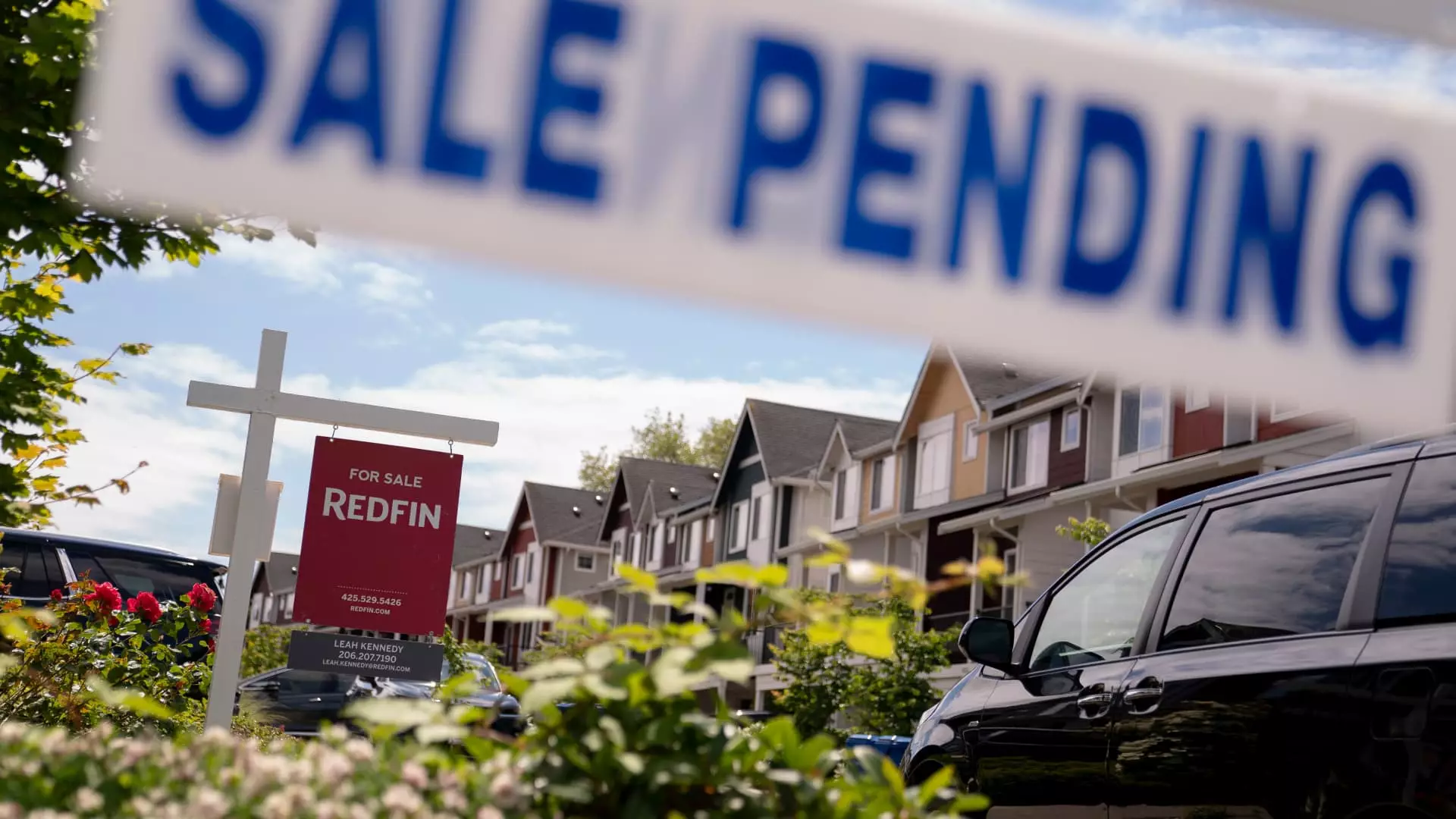In a startling turn of events, mortgage rates have surged to a peak not witnessed since February, sending shockwaves through the housing market. The latest data from the Mortgage Bankers Association highlights a daunting 8.5% decline in total mortgage application volume over the past week alone. This abrupt shift raises serious questions about the resilience of the housing market, as prospective homebuyers scramble to secure riskier loans that promise lower initial rates. While such financial strategies might allow buyers to enter the market, they carry substantial long-term risks that could jeopardize their financial stability.
Currently, the interest rate for 30-year fixed-rate mortgages has climbed to 6.81%, up from 6.61% just a week ago. This uptick, combined with existing economic pressures, has left many potential homebuyers apprehensive. The market is bracing for an avalanche of issues that could arise, as rates climb inexorably higher. It’s time to ask ourselves: how sustainable is this upward trend, and what does it mean for the average American family hoping to own a piece of their American dream?
Demand in a Sea of Supply
Against this backdrop, one might expect an overwhelming demand for homes, especially since applications for new home purchases fell by 5%, yet remain 13% higher compared to the same week last year. This slight year-over-year increase indicates that despite the myriad obstacles facing buyers today, there persists a latent desire to enter the housing market. However, there’s more to this story than meets the eye; significant inventory exists, with active listings up by 30% when compared to the previous year.
Despite a more extensive selection of homes, which should typically drive competition and sales up, potential buyers are wary. Economic uncertainty, coupled with unstable mortgage rates, is forcing buyers to reconsider whether pursuing homeownership in today’s market is wise. The reality is that families are being pushed into a risky quandary: either pay more for traditional fixed-rate loans or gamble on adjustable-rate mortgages (ARMs) that promise lower monthly payments but come laden with the threat of future increases.
The Increasing Allure of Adjustable-Rate Mortgages
The stark irony is that, while adjustable-rate mortgages may alleviate some short-term financial pressures, they create long-term uncertainties. According to the findings, the share of applications for ARMs shot up nearly a full percentage point in just one week. These loans, offering initial fixed rates around 6%, entice buyers who are desperate to make homeownership feasible. Nevertheless, the allure of lower rates can lead to disastrous consequences when those rates inevitably adjust upward.
Moreover, applications for refinancing dropped by 12% last week, though they have surged by 68% compared to the same period last year. Although borrowers may have benefited from historically low rates, the current upward trajectory indicates that many are in a precarious position. With refinancing now more complex and less lucrative, prospective borrowers must tread carefully.
The Volatility of Today’s Financial Landscape
As the week kicked off, mortgage rates dipped slightly, offering a glimmer of hope. Yet, experts remain skeptical. The current environment is fraught with volatility, suggesting that short-lived dips should not be seen as a signal of a sustained downward trend. It is urgent that consumers proceed with caution, as market fluctuations could rapidly alter their financial planning.
Matthew Graham, of Mortgage News Daily, cautions against complacency, urging stakeholders to recognize that the current mortgage rates are not guaranteed to remain constant. Living in a state of uncertainty not only affects potential buyers but also ripples through other sectors of the economy, creating a broader context of financial instability.
Through the lens of center-wing liberalism, it becomes clear that while individual desire for homeownership is strong, systemic barriers created by fluctuating interest rates and economic uncertainty are stifling access to affordable housing. This juncture necessitates meaningful discourse and innovative policy solutions that prioritize long-term stability over short-term fixes. As we navigate these turbulent waters, it’s crucial to advocate for a housing market that functions equitably for all Americans, rather than one that simply benefits financial institutions.

